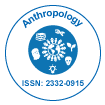
Anthropology
Open Access
ISSN: 2332-0915

ISSN: 2332-0915
Commentary - (2025)Volume 13, Issue 1
Cultural relativism stands as one of the most significant and debated concepts within the field of anthropology and the broader social sciences. It is the idea that cultural norms, beliefs, and practices should be understood and interpreted based on the context of the culture in which they arise, rather than judged through the lens of another culture's values or standards. As a guiding principle, cultural relativism challenges ethnocentrism the tendency to view one's own culture as superior and to use it as a benchmark against which all other cultures are measured. By advocating for cultural understanding without judgment, cultural relativism opens the door to greater empathy, respect, and appreciation of human diversity, though it also raises complex ethical and philosophical questions that continue to spark debate.
The influence of cultural relativism extended beyond academia. It helped reframe global conversations about human rights, tolerance, and the legitimacy of different ways of life. It encouraged scholars, policymakers, and the general public to consider that practices which may seem irrational, immoral, or strange from one cultural standpoint may in fact have meaning, purpose, and coherence within their original contexts. Cultural relativism invites us to pause before passing judgment, to ask questions instead of making assumptions, and to approach unfamiliar practices with curiosity rather than disdain.
At the heart of cultural relativism lies the belief that there is no single universal standard of morality or truth that can be applied to all human societies. Instead, it holds that values and norms are culturally constructed and historically situated. What one culture considers polite or respectful may be seen as rude or inappropriate in another. Practices related to food, dress, marriage, gender roles, child-rearing, and religion all vary widely across cultures, and these differences cannot be adequately understood without taking into account the broader cultural context in which they occur. This perspective not only enriches our understanding of humanity but also challenges the tendency to impose one's own values on others.
In navigating this tension, it is essential to distinguish between understanding and endorsement. Cultural relativism does not necessarily mean agreeing with or supporting all practices. Rather, it means striving to understand them on their own terms, recognizing that judgment should be withheld until a deeper contextual understanding is achieved. It is possible to critically engage with a practice while still respecting the people who uphold it. In this way, cultural relativism becomes a tool for dialogue and mutual learning rather than a shield for uncritical acceptance.
Cultural relativism also has practical implications in fields such as education, healthcare, international development, and diplomacy. In multicultural classrooms, for instance, teachers who embrace a culturally relativistic approach are more likely to create inclusive environments that value diverse perspectives and learning styles. In healthcare settings, understanding patients' cultural beliefs about illness, healing, and the body can lead to more effective and respectful care. In international relations, cultural relativism encourages negotiation and cooperation rather than imposition and conflict. These applications demonstrate that cultural relativism is not only a theoretical principle but a practical framework for navigating a complex and interconnected world.
Citation: Lehmann T (2025). Cultural Relativism as a Diplomatic Tool in International Relations. Anthropology. 13:258.
Received: 03-Mar-2025, Manuscript No. ANTP-25-38238; Editor assigned: 05-Mar-2025, Pre QC No. ANTP-25-38238 (PQ); Reviewed: 18-Mar-2025, QC No. ANTP-25-38238; Revised: 25-Mar-2025, Manuscript No. ANTP-25-38238 (R); Published: 01-Apr-2025 , DOI: 10.35248/2332-0915-25.13.258
Copyright: © 2025 Lehmann T. This is an open-access article distributed under the terms of the Creative Commons Attribution License, which permits unrestricted use, distribution, and reproduction in any medium, provided the original author and source are credited.